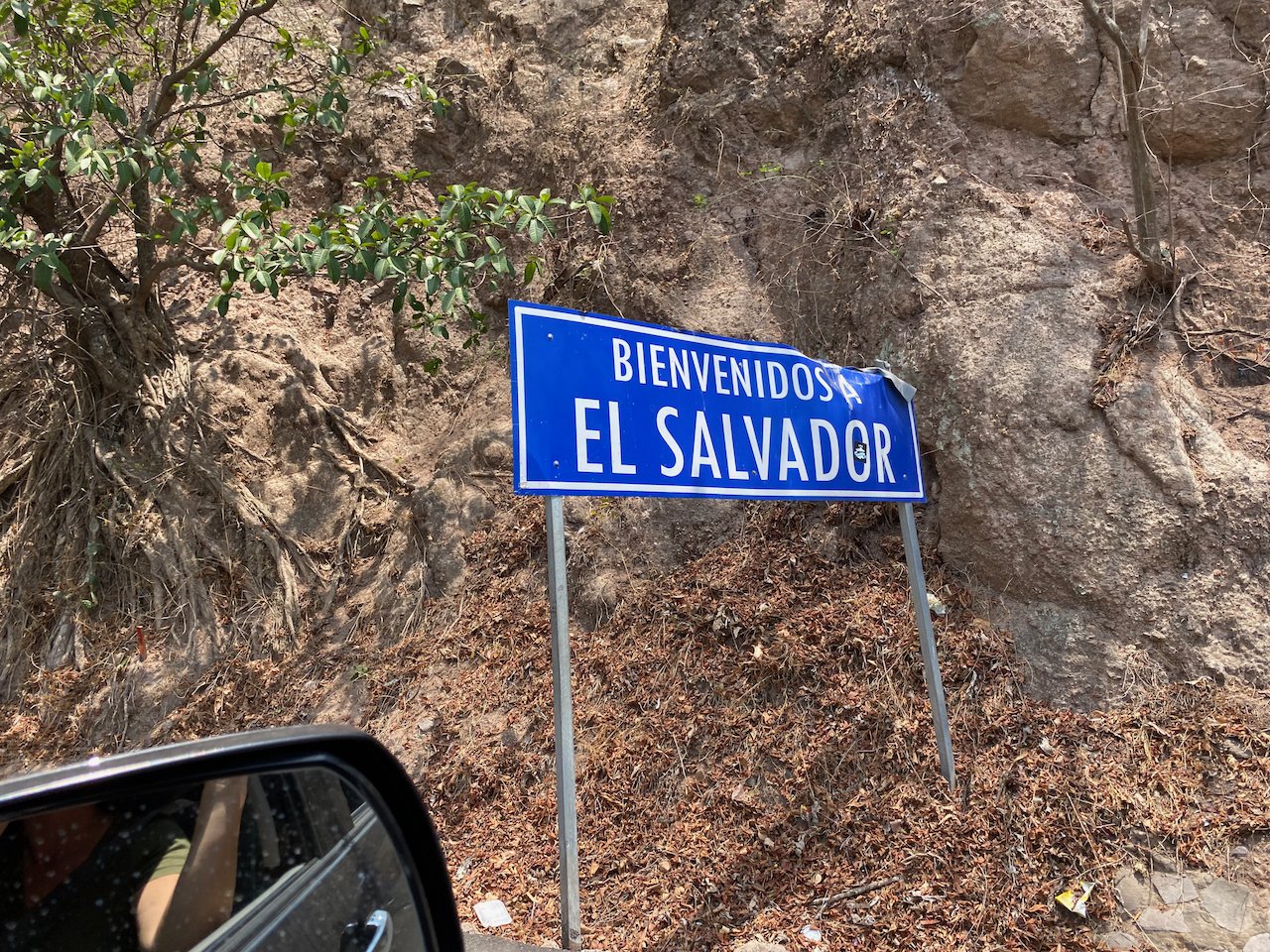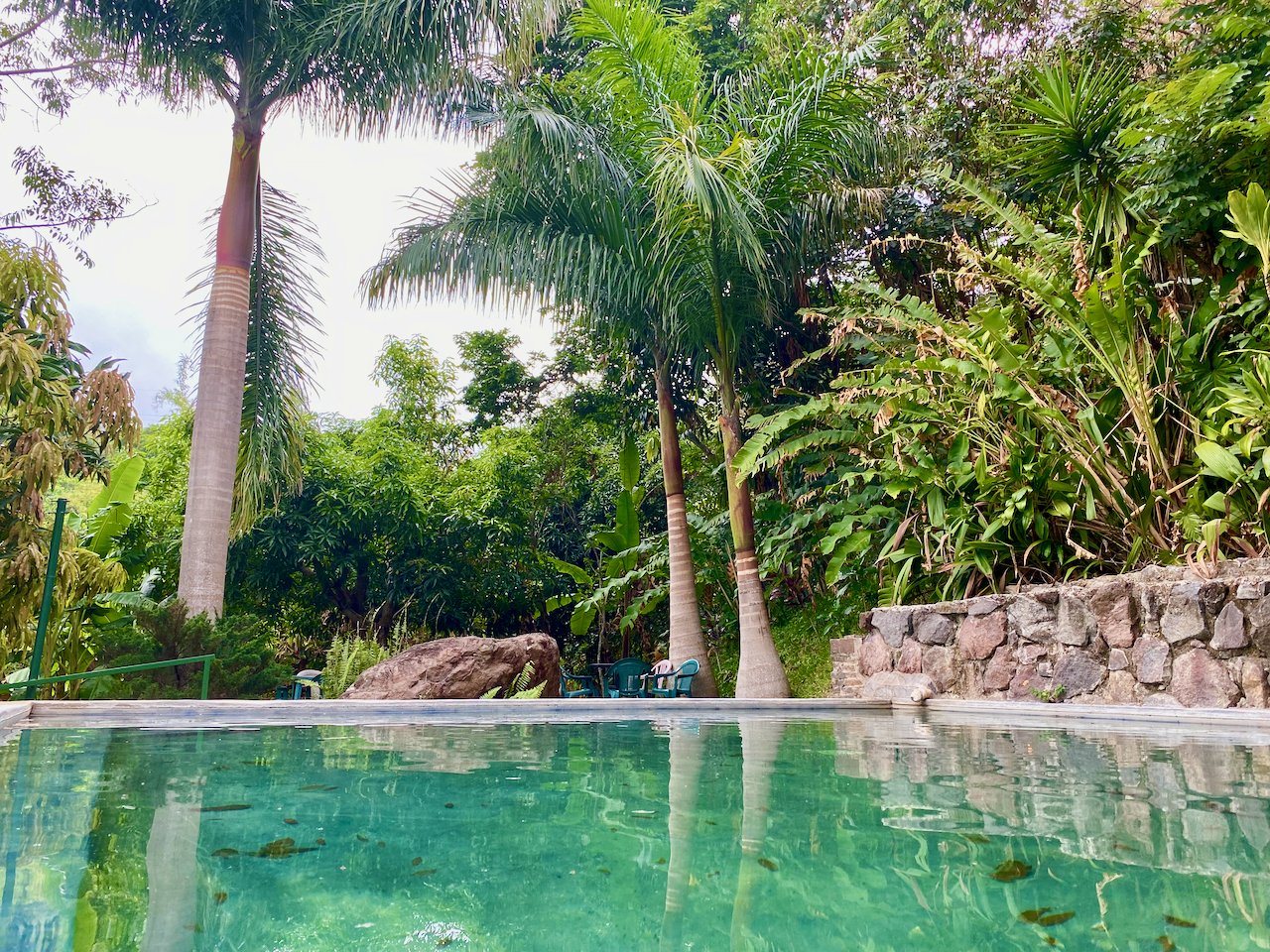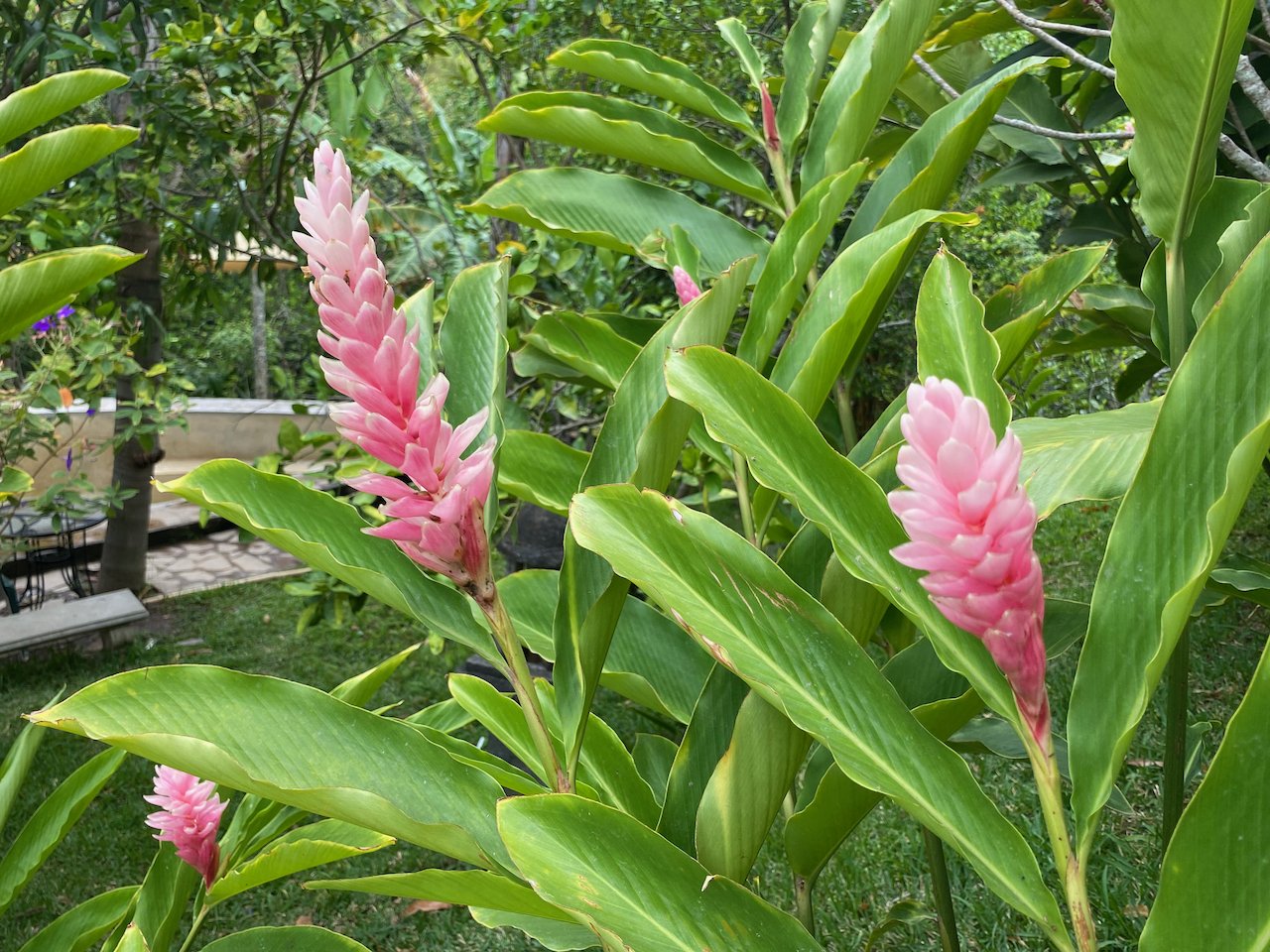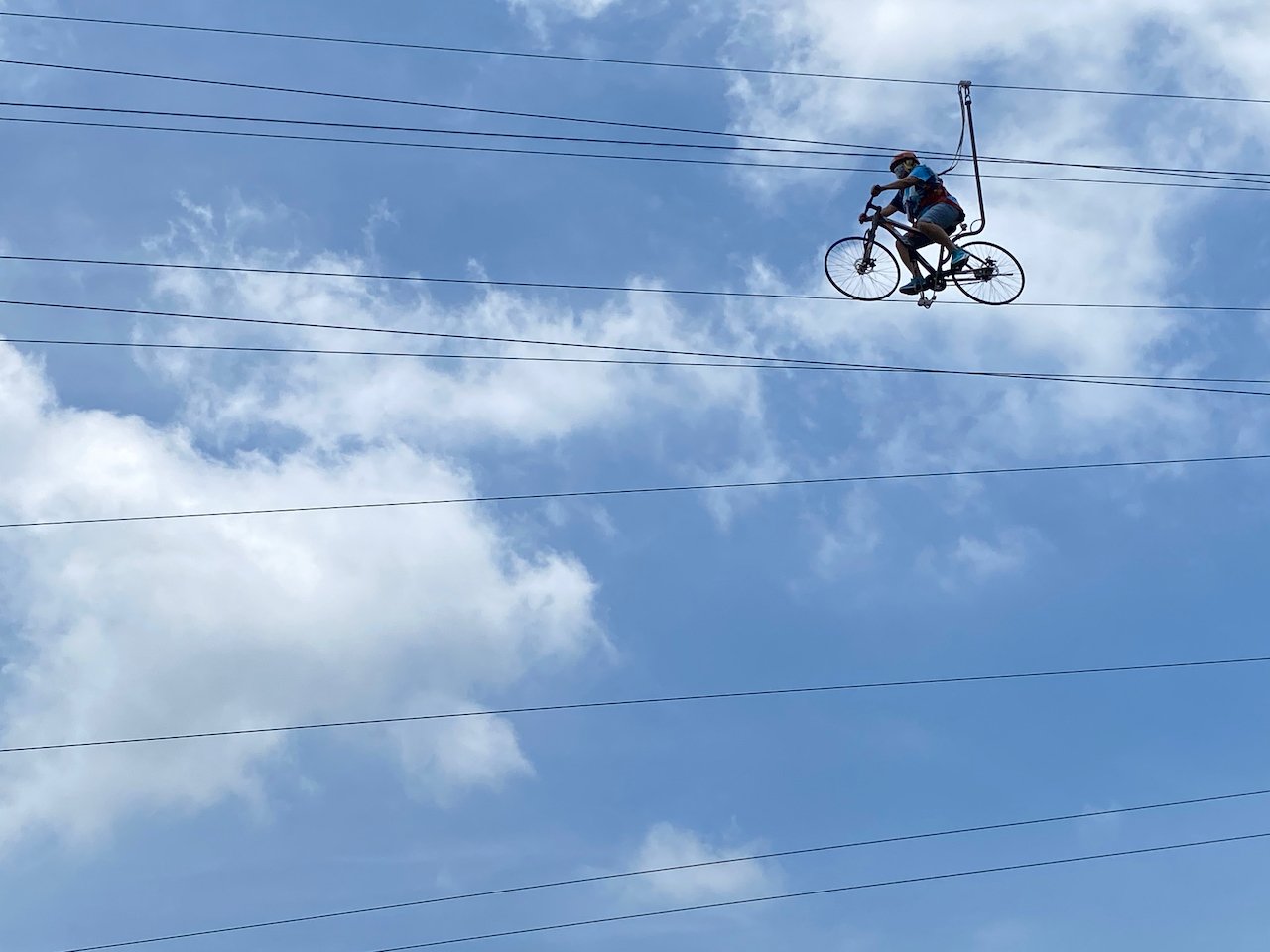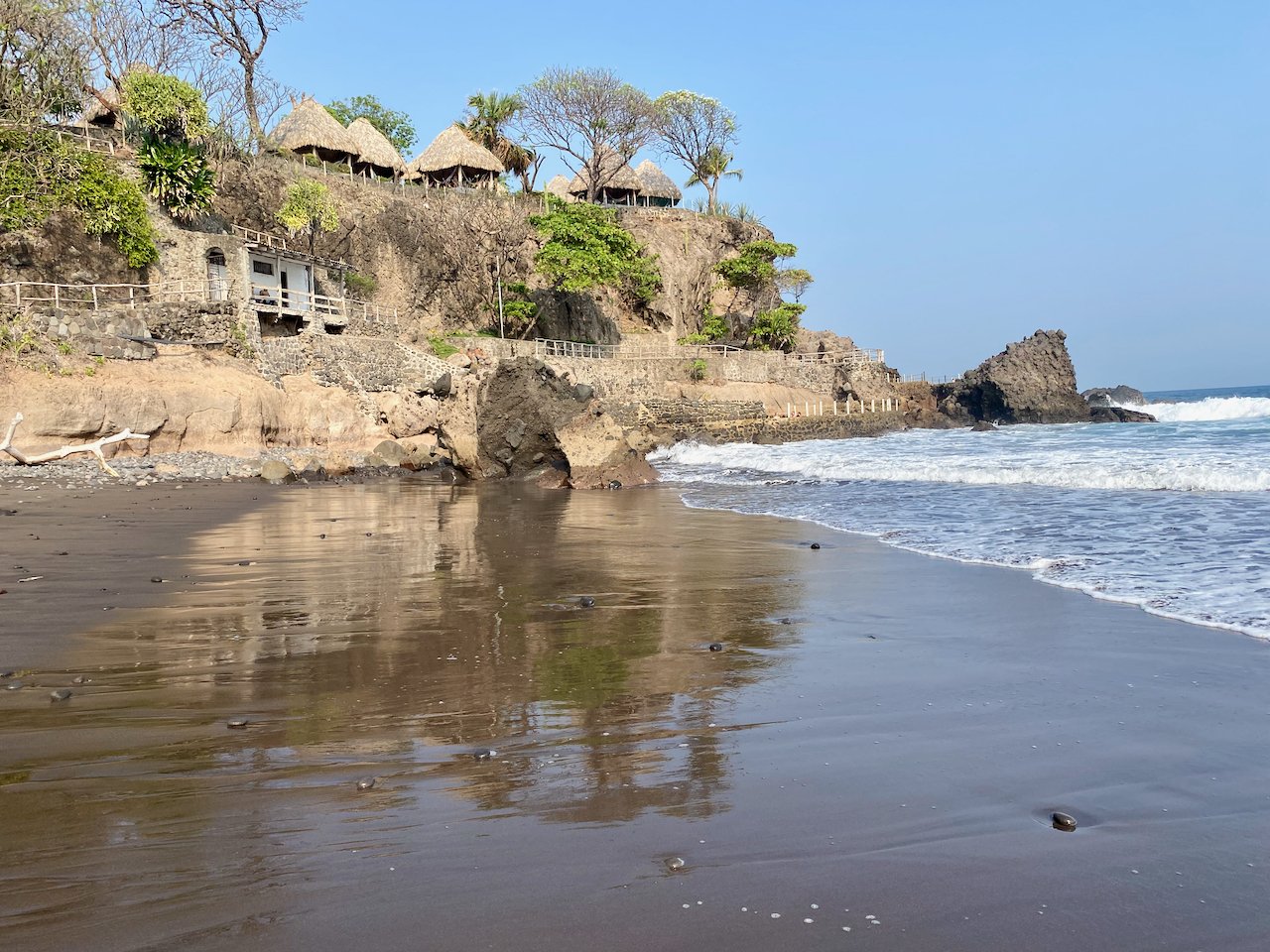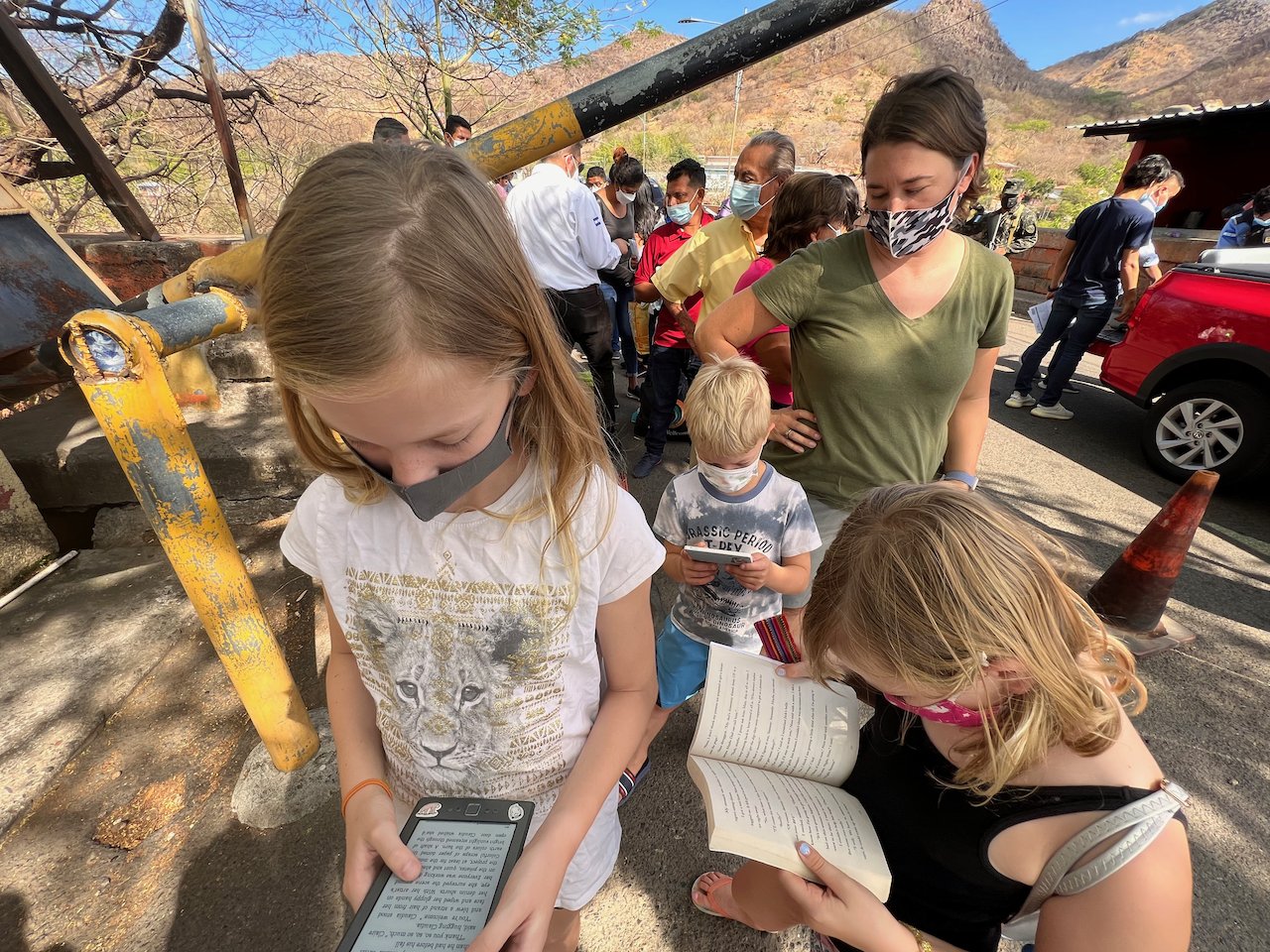As is the case with many of the places we’ve been to, we hadn’t necessarily planned to stay long in El Salvador, but once we started researching the country, changed our plans to include some time seeing its wonderful places. Just before we were planning to enter the country, news hit that there had been a record number of murders over a short period of time and the President issued a State of Emergency. This gave us a bit of pause. We would still need to go through the country but would we stay? After a week, the political situation became clearer and we spoke to another family in the country who had been touring for a week. It sounded safe enough to proceed with our plans.
We had a relatively smooth border crossing after a very scenic, mountainous drive through Eastern Guatemala. We cleared out of Guatemala, crossed a river, and started our entry process. First was a COVID temperature check, some questions about where we live, where we’ve been, if we’ve had vaccines, what types, etc. Then we parked and went to an air-conditioned (so grateful because it was about 34 degrees C) building to speak with immigration. They scanned our passports and welcomed us to the country. We then walked to an outdoor tent and started the process of importing our vehicle and its contents. One gentleman was working as the customs agent. We filled out a very detailed form about our vehicle, right down to how many seatbelts and what type of engine. We made a mistake (it was in Spanish after all) so we had to redo the form a second time. The agent then typed our information into a system in a small hut next to the tent. Once done, he stamped a form and issued us a permit for 90 days. We made our way into the country celebrating our 5th crossing and our 6th country.
We booked a small hotel room in the mountain town of Conception de Ataco as our base for touring the area known as La Ruta de las Flores, or Route of Flowers. It is a stretch of scenic road that winds through colonial towns and displays colourful shrubs and trees with bright, beautiful blossoms. Ataco is a word that, in the indigenous language of Nahuatl, means Place of Elevated Springs. The town itself has begun to boom as a tourist destination and has a number of options for both budget-conscious and luxurious travellers. We made sure to spend a few days exploring the town, taking in the Salvadorean life, and shopping in the vendor stalls along the town roads. We also explored many attractions within the area including some hot springs, a hedge-based maze with a zipline, a coffee processing plant, and a quiet waterfall.
There are a number of springs (thus the town’s indigenous name) in the area, mostly hot springs from volcanic sources, and even a hot waterfall (which we were sadly unable to visit). We chose to visit a smaller site that is, perhaps, less known to tourists but is still fully developed. The Alicante Hot Springs had 11 pools of varying temperatures. A few were empty for cleaning and a couple were being filled by the springs at a very hot temperature – too hot to touch. We swam and relaxed quite comfortably in the remaining open pools. We also walked a short distance into the woods to see the dried-up waterfall which is likely quite beautiful before the dry season arrives. The site also had a decent restaurant and was not very expensive to enter. We were nearly the only guests and felt like royalty with the place to ourselves. We’d recommend it to others.
On a whim, we decided to go to a farm with a hedge maze and some ziplines. Not sure what to expect, we were very impressed at how difficult it was to complete the maze. There is staff close by to help, should you need it (and we did). We took almost an hour to find our way out but were pretty proud for working (mostly) together. From there, we ate at their restaurant and then signed four of us up to do the zipline course. It was the first time for all of us. Erik opted to be a videographer instead of running the course so the kids and I made our way shakily up to the first platform. Once the first line was completed, everyone was eager to do the longer, steeper lines. There were four lines in total, each getting longer and faster progressively. We even had to complete a short sky-course in between some of the lines. The kids had a lot of fun. Smiles were big and bright. There’s nothing better than the feeling of accomplishment and all three of them were definitely feeling it.
Our final outing was to take a tour of a working, coffee processing plant. Although the area also grew coffee plants, we only visited the factory. We started the tour with a tasting of the plant’s gourmet blend while the guide spoke to us about coffee in general and some of the history of the plant. I was blown away at the complexity and variety of coffee options. It turns out that beans grown at higher elevations take longer to mature and ripen which also allows for more flavour profiles to form in the berry. There are three levels of elevations where plants will grow and will each yield different quality beans. Then, there are four varieties of arabica coffee beans grown in El Salvador: Typica, Bourbon, Geisha, and Pacamara. Each variety will have different flavour profiles depending on their elevation. And then each crop, after harvest, can be processed in one of four ways: natural process, anaerobic process, honey process, and the wash process. So, a geisha crop grown at mid-elevation and processed through the honey method will taste very different from the same bean crop processed through the anaerobic method. Without even taking soil health into consideration, this leaves us with 48 different outcomes from just 4 types of bean variety! Oh, and this is all BEFORE you roast them.
The four different processing methods were the main subject of our tour. It was really interesting to see the mix of manual and mechanical components working together. It was also very surprising to see how little technology was being used. For example, knowing what batch of beans is in which container and is destined for which phase of which process is still managed by paper and pen. Beans drying in the sun are laid out on acres of concrete and hand stirred by workers with shovels. Each 75lbs bag of processed beans is hand-carried from packaging to storage. The labelling of batches is done with laminated cue cards and erasable sharpie pens. The plant employs over 300 people and operates in some capacity all year long. During our visit, many workers were on holiday for Easter. Plus, it was the end of the growing and harvesting season and only a few crops were still in the final phases of processing. The warehouses were full of sacks of beans which needed to sit and rest for not less than 60 days and which were tested regularly for quality and readiness. He explained to us that the plant will receive about 10 million pounds of coffee berries in a season. From those berries, about 2 million pounds of beans will leave for their final destinations.
The final phase of our tour was to conduct an official tasting session where our guide showed us all of the steps to follow. First, we smell the dry, ground coffee with three big sniffs. We then add hot water and stir. We clean off the residue of bean fragments and take our first sip. But it isn’t just any sip. You must suck the coffee into your pursed lips very quickly so that you also suck in some air. Then you roll the liquid around your mouth and either swallow or spit it out. From there, you assess the flavours left on different parts of your tongue as well as see how long those flavours stay in your mouth. You repeat as many times as you need to make a decision about quality. Not surprisingly, neither Erik nor I were able to differentiate the higher quality bean from the lesser. We quite enjoyed both cups! We were fed a tasty lunch and then stayed on the farm to play in their playground before heading back to the hotel.
On the way out of town, we stopped at a waterfall but were not able to swim as the levels were low. It was beautiful nonetheless and we were glad to have taken the time to enjoy the space.
Our next place was a bit of a splurge. We found a beach resort on a cliff overlooking the Pacific that boasted a number of pools, including natural saltwater pools that fill with the crashing waves at high tide. The location was also nestled between two black sand beaches. It was really, really hot. Really hot. So we scoped out a thatched-roof hut with hammocks and a picnic table to spend the majority of the day, especially in between trips to the beach or the pools. We ate at the on-site restaurant and just enjoyed the heat (in the shade!) and the fun waves on the beach. We swam in one of the tide pools near dinner time and got a few good waves worth of splashes. It was a lovely time at a lovely spot.
The next day we made our way to San Miguel where we had a PCR COVID testing appointment. In order to cross into both Honduras and Nicaragua, we required COVID negative tests regardless of our vaccination status. The kids were really on edge knowing that it was a (more invasive) PCR test instead of a rapid-antigen test. Thankfully, the staff was amazing and the tester was as gentle as they could be given the test’s requirements. Everyone did just fine! It was my birthday and I spotted a fancy donut shop close to the lab. I bought donuts as my birthday cake and they were very, very good! We had booked a small rental home in a subdivision with a pool, which was essential to our survival, and spent one day preparing for our double border crossing. It was sunny and the temperature was over 35. The pool became our best friend!
Our next adventure was a long one – we drove from San Miguel into Honduras, then through Honduras and into Nicaragua, and then from the border to the town of Matagalpa. It was a 12hr day and is a story for another time.




